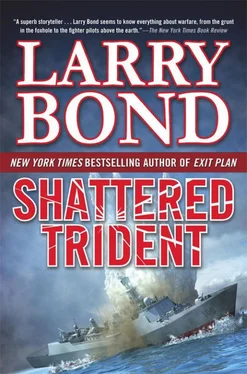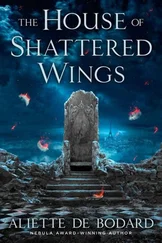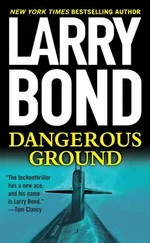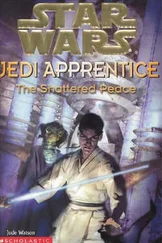“And frankly, I’m glad we’re at DEFCON III,” Kirkpatrick remarked almost casually. “It means we’re better able to react, and the rest of the world knows it, too. But there’s more bad news: the Indians have joined the party.”
Joanna was pouring coffee and almost dropped the pot. She did spill some, and had to force herself to carefully set it down before answering. “I don’t suppose the Indian government’s issued any statement about the South China Sea lately.”
“Not a one,” Kirkpatrick said calmly. “We should be so lucky. The latest sensor dump from North Dakota ’s UUV shows Chakra sinking a Chinese tanker. You can pull it up and watch it later, if you have the time. You probably won’t. Squadron Fifteen says they are ninety-five percent certain of their analysis. Commander Mitchell’s crew came up with the same conclusion. That isn’t why I woke you up, though.”
Patterson had just started processing the implications of Indian involvement in the crisis. “What could be worse than that?”
Kirkpatrick pointed at the screen displaying the South and East China Seas. It was overlaid with the four subs’ patrol zones. “Commander Dobson’s boat, Oklahoma City, is up in the East China Sea, and he sent in a disturbing contact report that Squadron Fifteen just forwarded. He picked up a very faint submerged contact and spent almost an hour trying to close and get a better look. It moved off before he could identify it, but he is convinced that it was quieter than any Chinese boat or a Vietnamese Kilo.”
“He lost contact?” Patterson was surprised. Los Angeles subs had very capable sonar suites, and could maneuver quietly at speeds that would exhaust a diesel’s batteries in a few hours.
“Oh, he’s still looking,” Kirkpatrick explained. “In fact, according to Commodore Simonis, he’s pissed. He’s not used to losing. More to the point, this was the first indication…”
A naval officer, almost breathless, came up to the pair, stopping short, but then offering Kirkpatrick a sheet of paper. “Another sinking,” the officer explained, “the tanker Da Ming Hu, 84,855 GRT, Chinese flagged, near Wenzhou, north of Taiwan.”
“That’s in Dobson’s patrol area,” Patterson remarked.
“The first one that far north, as well. Look,” he said, pointing to the Chinese fleet boundaries, “and the first one in the East Sea Fleet area.”
“So the Vietnamese… and the Indians have the southwest, and somebody else the northeast?” Patterson asked.
“Does Mongolia have submarines?”
“Don’t joke about it, Ray,” scolded Joanna.
“India seems about as likely,” Kirkpatrick countered. “And now somebody else? We don’t even know why Vietnam is fighting. The only thing India and Vietnam have in common is that they both see China as a threat. So who else doesn’t like China?”
“That’s a long list,” Joanna replied.
“Good point.” Already frowning, Kirkpatrick asked, “How do we know it’s only one more player?”
She didn’t bother giving the obvious answer. Patterson felt frustrated by being so clueless, and fearful for the future. If you don’t know where you are, it’s hard to know where you’ll end up.
She thought about the latest tanker to be sunk. The printout said 84,855 gross registered tons, deadweight tonnage 160,000 tons. Deadweight tonnage was a measure of a merchant ship’s carrying capacity.
Years of working on environmental issues kicked in. At a little more than seven barrels per ton, that meant something over a million barrels of crude oil was spreading though the East China Sea. The prevailing winds would carry the slick into the Pacific Ocean…
“Now you know why I called you in,” Kirkpatrick observed. “I’m forming a crisis team. You’re in charge, of course. I’ve already notified State, DoD, and CIA to send reps, and not low-level ones either. Also, you’re getting someone from the council of economic advisers. We have to know just how much pain China’s feeling. If you think of anybody else, don’t even bother asking me first, just grab them and fill me in when you can.”
She’d done this before, Joanna reminded herself. But she still felt chills. War was breaking out, and they didn’t even know who was fighting, or why. And she had to find answers.
“My charter is to give the president options to guide U.S. policy. I believe the best U.S. policy right now is to find out what the hell is going on.” Kirkpatrick sighed and took a long drag on his own coffee cup.
“You haven’t slept yet, have you?” she asked.
“No, and I have to brief the president at 0700 hours this morning. That gives you,” he glanced at his watch, “less than three hours to come up with intelligent suggestions for me to offer the president. Don’t be subtle. The rest of the world is going to start reacting to the sinkings very soon. Wake people up, reach out to anyone in the government you think can help. I’ll be back here at 0630.”
“Are you going to get some sleep, I hope?”
“No, I’ve got a few bodies of my own to exhume. If they have anything useful, you’ll be the second one to know.”
31 August 2016
0700 Eastern Daylight Time
CNN Headline News
The two anchors on the CNN morning broadcast did their best to look grim. Happy faces were not appropriate to the news. “War has broken out off the coast of China, although so far a one-sided war, and a secret one.”
The image on the screen was frightening, but fascinating. “This was the Chinese-owned and -flagged tanker Hai Tun Zuo, en route from the Persian Gulf to Shanghai, loaded with over half a million barrels of crude oil.” The massive vessel, broken in two, listed drunkenly on the ocean’s surface. The two parts of the ship were enveloped by flames, fed by a dark black slick that spread out hundreds of meters. The bow and stern were elevated as the torn midsections took on water, exposing the red lower hull. The white upperworks on both parts were scorched and stained. Rescue ships stood off upwind from the oily black smoke that half-hid the shattered vessel.
“At a little before dawn local time, Hai Tun Zuo suffered a disastrous explosion, leaving her on fire and sinking. Normally, a disaster like this would have to be investigated and its cause determined, but this was not an isolated incident.”
A map replaced the burning tanker, with a flickering point of fire marking the ship’s location to the west of Hainan Island. The map then began to fill with other points of flame.
“In the past forty hours, over a dozen merchant ships, all Chinese tankers loaded with oil, have suffered deadly explosions, dotting the ocean with desperate calls for help. Naval experts all agree that someone has begun torpedoing Chinese tankers.”
The image shifted to show a white-painted rescue vessel with a red band angled across the bow and Chinese characters along the side. “China’s Maritime Safety Agency, responsible for search and rescue at sea, has mobilized its entire force to respond to the distressed vessels, any one of which is a major disaster. The Border Guard, a separate Chinese paramilitary force, is also assisting, as well as hurrying to the defense of other Chinese vessels.
“Other merchants have approached the distressed vessels and offered what aid they could, but the wrecked ships are often on fire, and many of the survivors require more medical care than the civilian ships can provide. In all the attacks so far, at least seventy merchant sailors are known to be dead or missing, with twice that many injured.”
Images of stretchers being carried away from a helicopter were replaced by a seated Chinese official, flanked by military officers. Chinese characters scrolled across the bottom of the screen. “Officials in Beijing have condemned the sinkings as ‘terrorism,’ but have refused to identify their attackers, or explain this refusal. The Chinese ambassador at the UN also declined to comment, and would not speculate on possible Chinese actions. The only conceivable reason for not naming the perpetrators of the sinkings is because the Chinese do not know who they are.
Читать дальше

![Никки Сикс - Героиновые дневники. Год из жизни павшей рок-звезды[The Heroin Diaries - A Year in the Life of a Shattered Rock Star]](/books/78612/nikki-siks-geroinovye-dnevniki-god-iz-zhizni-pavshej-rok-zvezdy-the-heroin-diaries-a-yea-thumb.webp)










